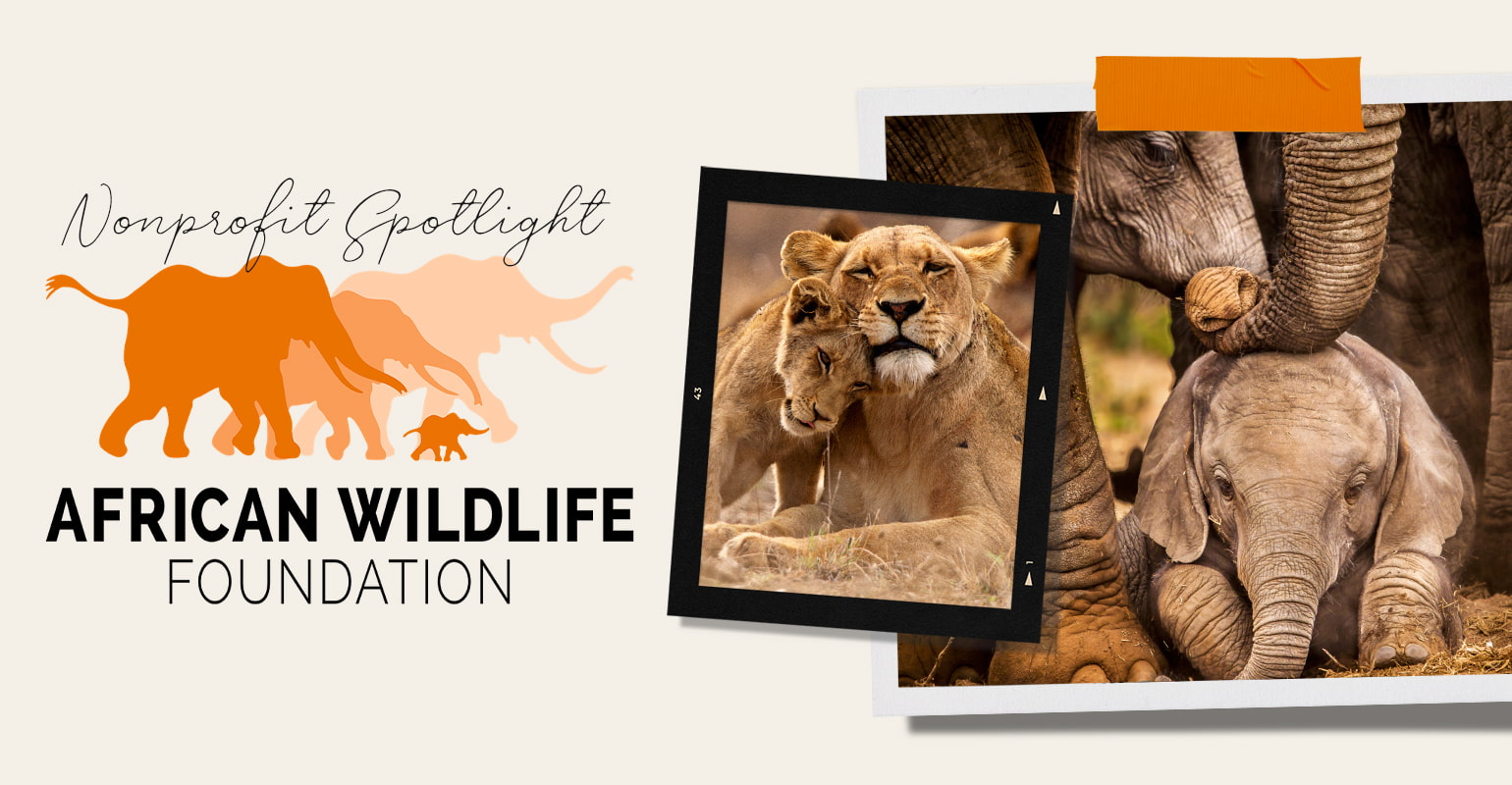Wildlife (especially endangered species) have the best chance to survive in their natural habitat. Yet on continental Africa, the struggle between local communities and wild animals to coexist without fierce competition for land, food, water, safety, and other resources compounds the effort to save dwindling animal populations and wildlands worldwide.
Over the past 50 years, Africa’s oldest and largest conservation organization, the African Wildlife Foundation, has been a vital force in easing this human-wildlife conflict, whether it’s building new schools to break the cycle of poverty and save Zambia’s wildlife or teaching sustainable farming practices.
Learn more about the African Wildlife Foundation, a global nonprofit with a rich history of empowering communities and leadership to support conservation through its multifaceted approach to protect wildlife and their natural habitats.
What is the African Wildlife Foundation?
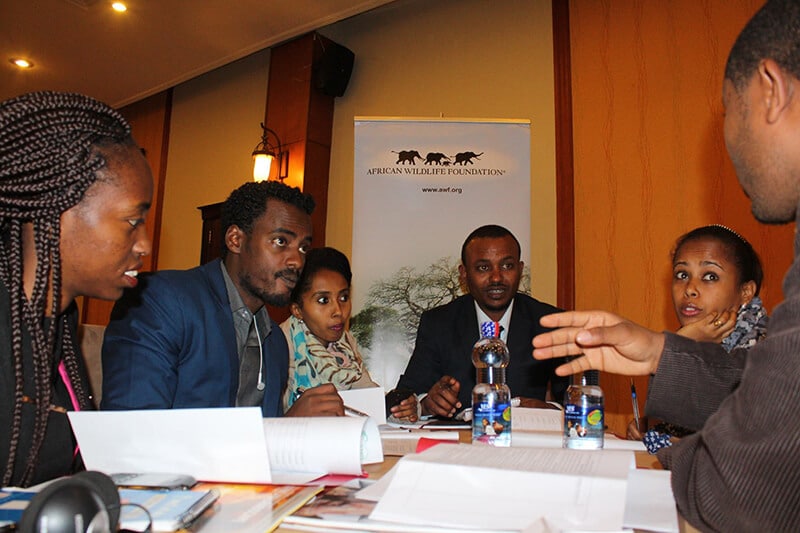
The African Wildlife Foundation (AWF) is the leading international conservation organization focused exclusively on “ensur[ing] that wildlife and wild lands thrive in modern Africa.” AWF’s vision includes working with communities to achieve sustainable progress where wildlife and vital ecosystems can thrive as a “cultural and economic asset for Africa’s future generations.”
African Wildlife Foundation History
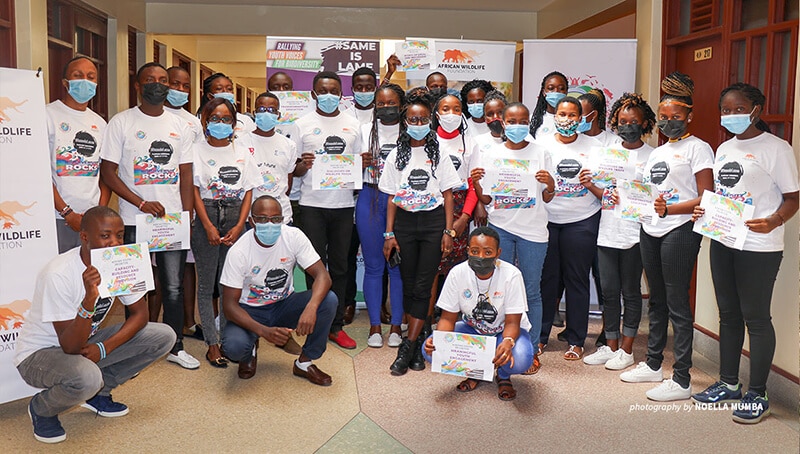
The African Wildlife Leadership Foundation, Inc., later African Wildlife Foundation (AWF), was legally established on March 20, 1961, to focus on continental Africa’s conservation needs.
In next year, AWLF was tackling its first project, helping to establish the College of African Wildlife Management at Mweka, Tanzania, followed by building a conservation education center at Nairobi National Park. During the 1960s, AWLF research grants financed the Serengeti Research Institute and Dian Fossey’s mountain gorilla study in Rwanda.
In 1975, AWLF started its long-term support for Cynthia Moss’ Elephant Research Project; and as a result, the elephant population swelled from 400 to 1,000+ over the next 20 years. AWLF also ran many popular fundraising campaigns with clever campaigns like “Give a Lion a Home” (proceeds helped expand two African parks) and “Only Elephants Should Wear Ivory” to promote a ban on ivory sales.
By late 1999, AWF expanded to four Africa Heartlands: Kilimanjaro, Samburu, Maasai Steppe, and Virunga. Their efforts lead to three sightings in 2001 of elephants in the Central Kajido District of the Kilimanjaro Heartland (the first time in 30 years).
In the 2000s, mountain gorillas, rhinos, elephants, and other endangered species continued to grow on the continent due to AWF’s presence and strategic programs. In 2009, AWF concluded the Campaign to Save Africa’s Heartlands (its first-ever comprehensive capital campaign) which effectively doubled its investment in the continent in five years.
The African Wildlife Foundation currently works in 14 African countries, including Kenya, Zimbabwe, Cameroon, Ethiopia, and Botswana, to overcome each country’s unique ecological and economic challenges to save wildlife and conserve biodiversity across Africa.
How the African Wildlife Foundation Gives Back
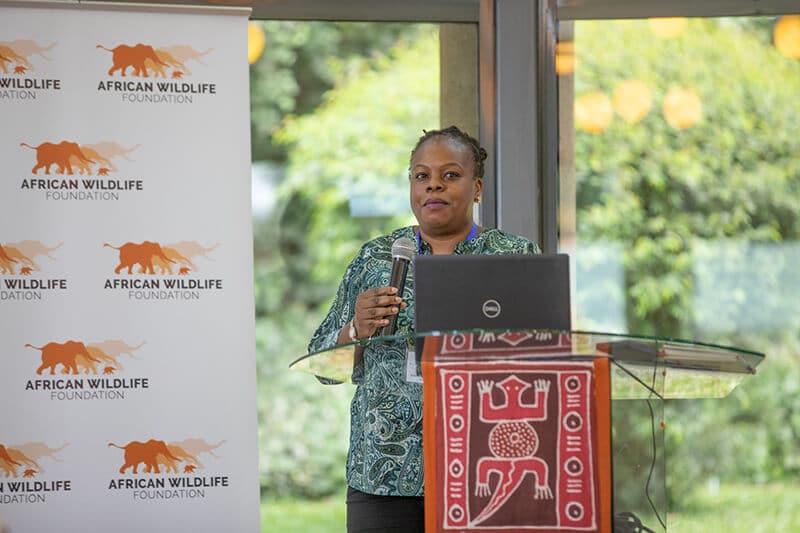
1. Wildlife Conservation
The African Wildlife Foundation helps protect the dynamic ecosystems all living things need to thrive by helping to improve the complex relationship between humans and the wild.
The AWF helps protect the world’s most endangered species through several efforts:
- Developing education outreach programs to help locals reduce human-wildlife conflict and preserve living and natural resources
- Assisting schools in shaping their curriculum to include lessons on conservation to teach younger generations about the importance of protecting their wildlife
- Intercepting wildlife contraband at major seaports to prevent and deter the transport and sale of illegal wildlife products like rhino horns, big cat skins, and pangolin scales
- Training local communities and law enforcement to participate in anti-poaching initiatives and enforce wildlife laws to catch smugglers and poachers
2. Land and Habitat Protection
The African Wildlife Foundation works hard to address the number one threat to wildlife and biodiversity in Africa today: habitat loss. AWF collaborates with communities to prevent detrimental effects to wildlands which can occur when local needs are not met.
AFW’s strategies to reduce habitat loss include the following:
- Developing conservation and land use plans that shield protected areas
- Equipping wildlife authorities across the continent with the training, equipment, technical input, and capacity necessary to manage protected areas effectively
- Providing livelihood alternatives that encourage communities to preserve surrounding lands and wildlife (like developing beekeeping enterprises, a win-win for the environment and farmers)
3. Community Empowerment
The African Wildlife Foundation works directly with communities to provide holistic solutions that can improve their quality of life while also protecting wildlife and conserving natural habitats.
These efforts include:
- Greater access to education for rural youth
- Conservation training to help increase arable land, forests, water sources, and pastures
- Lucrative incentives for conserving wildlife via sustainable tourism
- Economic opportunities to reduce the threats to wildlife and habitats
Diversifying the livelihoods of locals not only helps communities secure a promising future but also contributes to wildlife and habitat conservation.
4. Policy
The African Wildlife Foundation works with the political and economic leadership at the highest levels of government to enact policy that quells the loss of the continent’s wildlife and habitats.
African Wildlife Foundation Impact
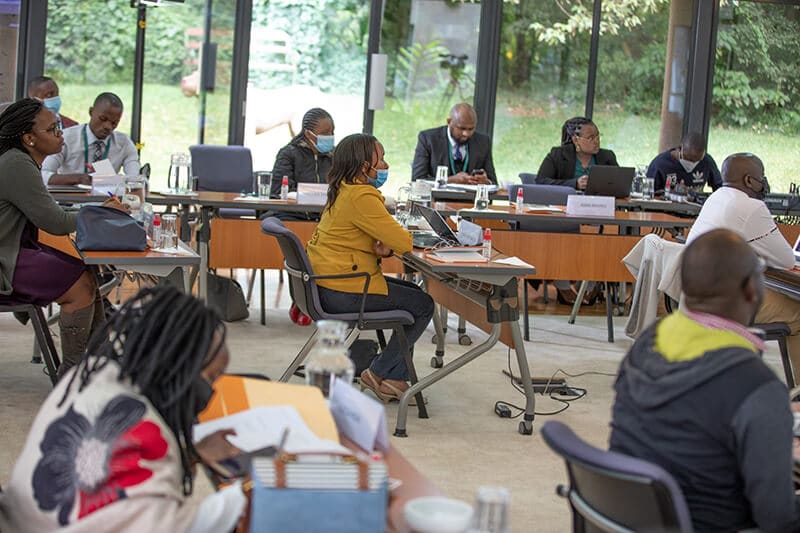
With over five decades of experience, skills, and expertise, the African Wildlife Foundation continues to invest in community-based conservation to protect safe spaces for wildlife.
In the Democratic Republic of the Congo, home to three great ape species facing extinction, AWF reached out to the Ilima, one of the most isolated communities globally, and built a new, sustainable school in exchange for the community’s commitment to conservation.
The AWF also delivers relief aid across the continent, announcing in 2021 that its 6-month COVID-19 emergency response fund raised over $1 million for conservation, and helped:
- Support wildlife rangers and agencies at protected areas and community conservancies
- COVID-19-affected rural communities thrive without detriment to nearby protected areas
- Expand AWF’s Canines for Conservation program to fight wildlife crimes in Tanzania and Kenya
- Strengthen and expand AWF partnerships with policymakers
Future Plans for the African Wildlife Foundation
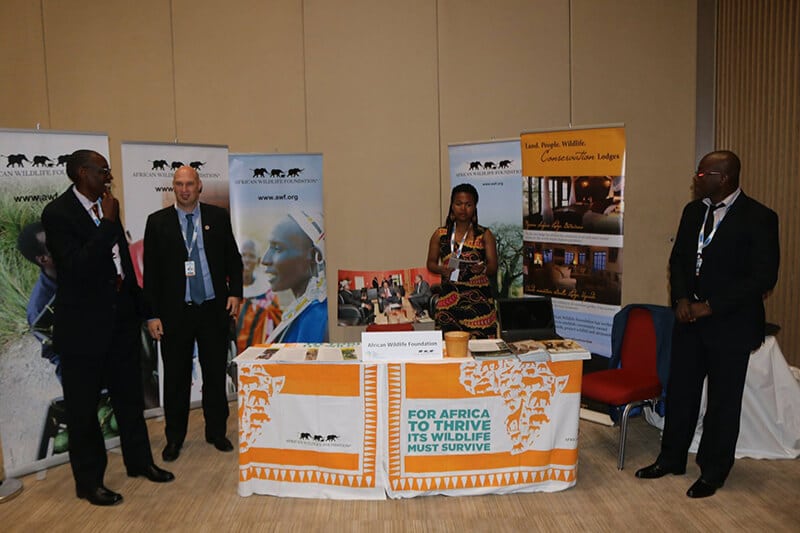
As AWF looks towards the future, it has set the following strategic goals for 2020-2030:
- To protect, conserve, and restore Africa’s ecosystems and the services they provide
- To conserve Africa’s wildlife and reduce significant causes of decline (i.e., poaching and trafficking)
- To promote African leaders who drive policy, finance, and planning shifts that benefit wildlife and wildlands
Encouraging more African youth to become leaders in conservation is also a top priority. Continental Africa’s population is expected to reach 1.6 billion by 2030, of which the rapidly growing youth demographic will represent 42 percent of the total population. AWF recognizes the importance of getting younger generations involved in protecting the future of wildlife and wildlands and plans to increase engagement.
In March 2021, AWF launched a youth leadership program for recipients of the Top 100 Young African Conservation Leaders Award, which collaborates closely with the Africa Alliance of YMCAs, the World Organization of the Scout Movement, and WWF. The 9-month program brings together a diverse group of young leaders to make a difference in advancing conservation in continental Africa.
The AWF also plans to establish the Young African Policy Fellows Program to empower African youth with the necessary skills to become game changers in biodiversity policy negotiations and participate in the national and international policymaking processes.
How to Support the African Wildlife Foundation
- Donate directly to protect Africa’s most vulnerable species
- Shop and donate your cash back using Giving Assistant
- Create a fundraiser to celebrate your birthday
- Participate in fundraising events that double or triple your donation
- Spread awareness about Africa’s poaching crisis with this infographic
What is Giving Assistant?
Giving Assistant helps online shoppers turn their everyday shopping into charitable giving.
Giving Assistant shoppers also get exclusive coupon codes to use at thousands of top online retailers, plus earn cash back they can donate automatically to the nonprofit of their choice.
Nonprofits who partner with Giving Assistant can reach their fundraising goals with ease by receiving these shopper donations. It’s a win-win for everyone!
To effortlessly shop, save, and donate to causes important to you, install our free browser extension, the Giving Assistant Button, to start saving and giving more whenever you shop.

